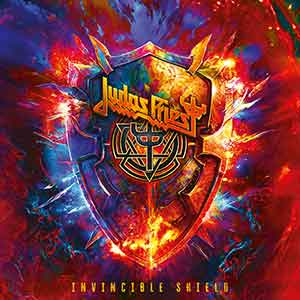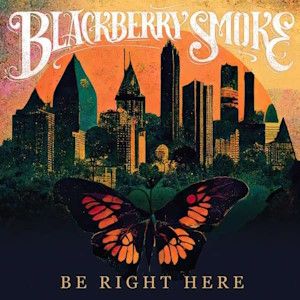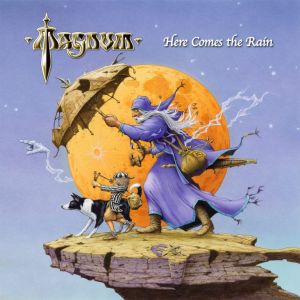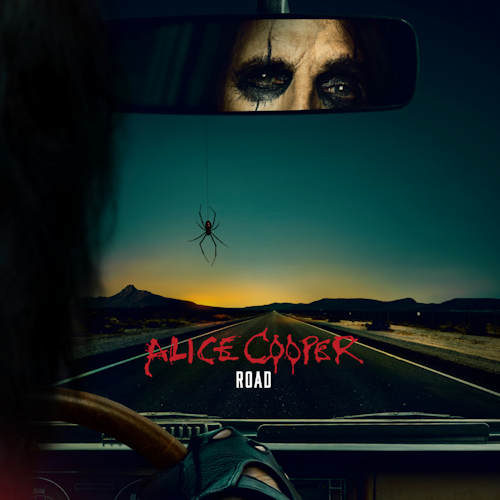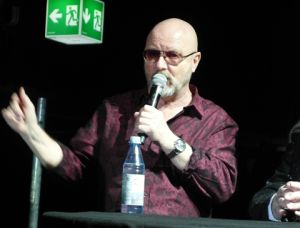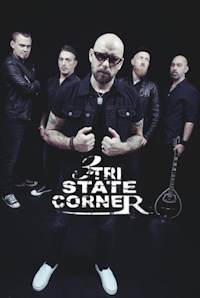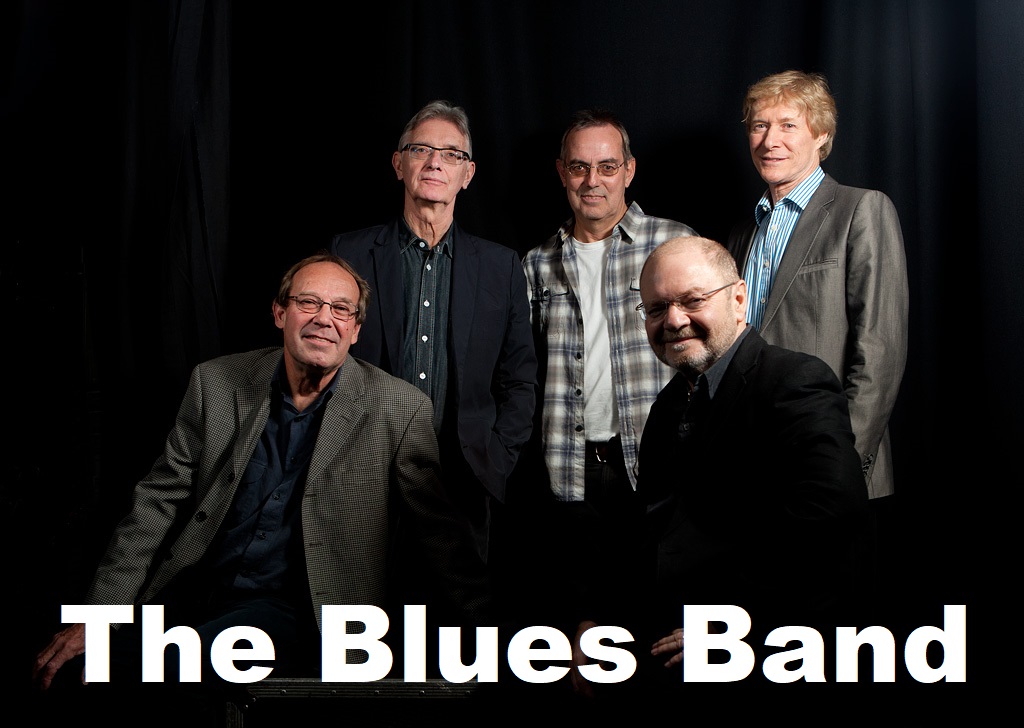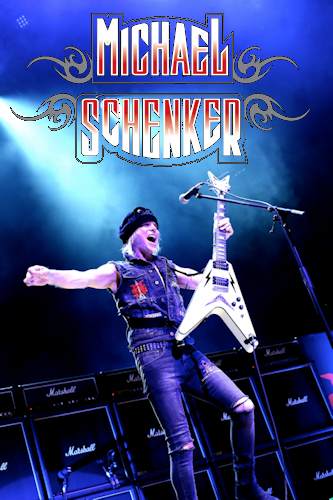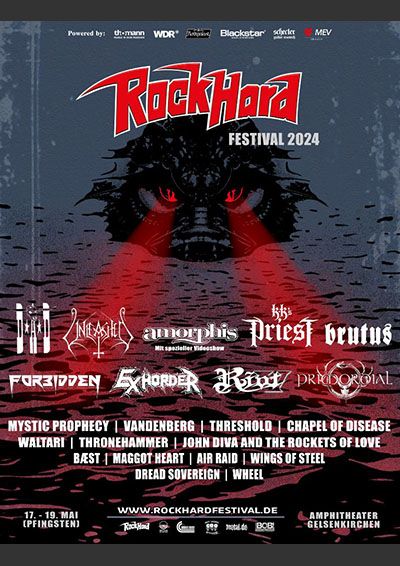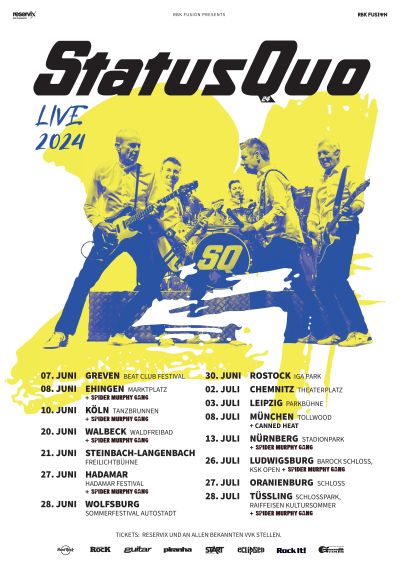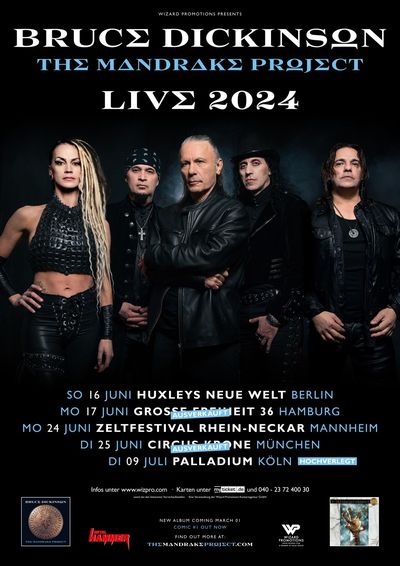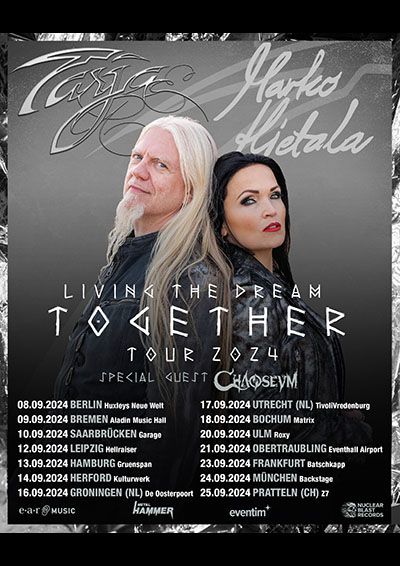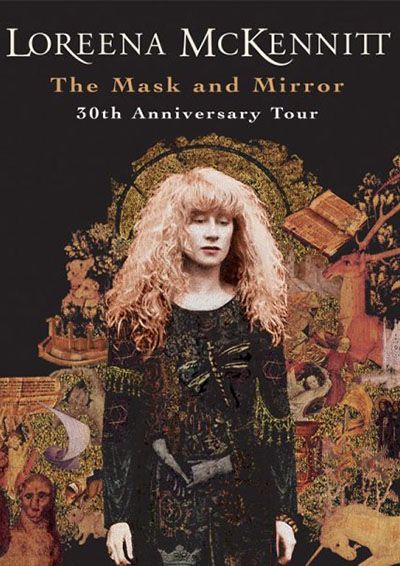
Neues Interview mit BRUCE SPRINGSTEEN
Zum neuen Burce Springsteen-Album "Letter To You" wurde vom Regisseur Thom Zimney auch ein Dokumentarfilm gedreht. Die schottische Radio- und Fernsehmoderatorin führte am 15.10.2020 ein virtuelles Interview mit Bruce und Thom, bei dem auch Fans und Zuhörer Fragen einreichen konnten, welches wir hier präsentieren.
Die Veröffentlichung erfolgt mit freundlicher Genehmigung von Sony Music.
VIRTUAL DISCUSSION WITH BRUCE SPRINGSTEEN & THOM ZIMNY 10/15/2020
Europe*
EDITH BOWMAN: Hello, everybody. Hi, everyone. My name is Edith Bowman. It’s a real treat to be here. I’m going to guide us through this virtual world with Bruce and Thom. Thank you to everyone who has submitted questions. We very much appreciate that. And just to let you know how it’s going to run, I will get into the conversation with Bruce and then bring in Thom for a bit, and then I will get through as many of your questions as I physically can in the time that we have this afternoon (or this evening), wherever you maybe with us.
So thank you so much for being here. t’s a real treat and a real honor, particularly because we get to take a step into his world as well because he’s joining us from the studio where I’m sure most of you have watched the film, where we watched this incredible creation of this new album from Bruce Springsteen and the E Street Band, Letter To You.
So it’s my absolute pleasure to welcome Mr. Bruce Springsteen and his creative partner, director of this beautiful film that accompanies the album, Thom Zimny. Good afternoon, gentlemen. It’s always a tense moment as to whether they’re going to turn up or not. Are you there? Technology, please don’t fail us.
BRUCE SPRINGSTEEN: Okay, hey!
EDITH: Yeah!
BRUCE: Hello! How are you?
EDITH: Hello, sir. Very good today. How are you today?
BRUCE: Hello, everybody, very good.
EDITH: Fabulous. Is Thom with us as well? Thom, are you there?
BRUCE: Yes, he is.
THOM ZIMNY: I’m here.
EDITH: Hello, Mr. Zimny, great to see you again.
THOM: Good to see you.
EDITH: Listen, we have a wonderful collection of people who are joining us from Austria. There’s a lot of people from Germany, Italy, the Netherlands, Poland and Switzerland, so we have quite a collection.
BRUCE: Fantastic. That’s lovely.
EDITH: I’m going to crack on because I’ve got lots of questions, then we’ll get some great questions from our great guests this afternoon. Thank you so much for being here. Thom, if it’s okay with you, I’m going to start with Bruce and then we’ll come back in and chat with you about this beautiful film that you’ve created to accompany his record. So we’ll see you in a second if that’s okay.
Bruce, first of all, congratulations on this beautiful piece of work. As fans, it feels so personal because it feels like you’ve written kind of these 12 letters almost in a way to your fans to continue this conversation that you’ve had with them throughout the years. Where did the idea for the album come from and at what point did you know it was going to be an E Street record?
BRUCE: Well, working with the band is cyclical, you know. I will work with them and then I will go to a variety of other projects, depending on what I have in mind. And then I’ll cycle back around to the band at some point. So it’s loosely cyclical.
I was thinking well, I’d like to go out and play, and when I go out and play, I need my men and women of the mighty E Street band, so I sort of had in the back of my mind I’d like to make a record. The problem was I hadn’t written any songs, any rock songs in about six or seven years, and you can’t just call them up. You know, they don’t just come up out of the blue.
So I hadn’t had much inspiration, but then I had an incident where one of my friends from my very first band passed away, and I spent a few days at his bedside. I didn’t think that much about it, except after he died, I was the last man alive in my first band. And so that felt kind of funny and rather strange.
I came back home and a few months went by, and suddenly I wrote a song called Last Man Standing, which is the first song I wrote for the record, and was basically the theme of the record. And I realized that for the first time, I was going to take as my theme, music itself, being in a band, rock-n-roll. I’ve never written directly about the music itself in all the years that I’ve written, so it was a new vein to work.
And in about 7 to 10 days I wrote basically all of the new songs that are on the record, and so it was the spark, just whether it was the spark of remembrance or memorial, or thinking about your blessings and how luck you are to be here...how time passes and death becomes a part of your life as you get older.
All of these subjects were sort of swirling around in my consciousness and ended up becoming songs.
EDITH: And I believe that the melodies and the musical side of this record came from a gift you were given from a fan just by chance as well.
BRUCE: Yeah, it was a young kid gave me a guitar outside of my plan on Broadway. And I brought it home. He just said, ‘Bruce, Bruce, I have a gift for you.’ And usually I’d think they want me to sign it, but he said, ‘No, no, no, this is for you, we had it made for you.’ So when I bought it home, I looked at it and it was a beautifully, beautifully crafted guitar. And not only that, but it sounded fantastic and played incredible comfortably, so I left it in my living room.
It sat there for a few months, and finally when I started to feel an urge to write, I picked it up and most of the songs from Letter To You came out of it. It’s a little bit of magical -- guitars are inspirational and they can contribute to the song that you’re writing. Every guitar has a soul and it has music in it, and I believe there are songs in each guitar that you pick up.
This one was particularly special. It gave me most of the songs for this record, so I thank that unknown gentleman wherever he may be.
EDITH: Such an incredible story. It’s almost got a kind of screenplay, it could be a film, that whole story of this kid with the guitar. Thom, you’ve got to make that. That should be the net film, for sure.
BRUCE: Yeah.
EDITH: So you have these songs and these kind of lyrics and this inspiration from various sides, but you call up the guys and arrange to go to the studio? Is that how it works?
BRUCE: Basically, yeah. Basically, I have a group of songs. The band will be called. We’ll make a date to play together in the studio, and uh everybody will be excited and apprehensive because usually we haven’t done it in a year or two. And we all show up. I start strumming the guitar. I teach them the song and then we go to it.
EDITH: Did you go in with an idea that you were going to record it like this, kind of the live version of it almost?
BRUCE: Yeah, I did because I cut a song, Jeannie Needs A Shooter, I cut once before for like a single for a record store day in the United States, but when I listened to back, it was so powerful, I said I need to keep this for an album. And it was just really sort of this big Dylan’esque, Darkness on the Edge of Town sounding cut, you know, and I said that’s how I want my next record to sound.
I wanted to take the template of Darkness on the Edge of Town, where it’s just the instrumentation of the band, no overdubs, everybody playing at once. And just get that sound out of the band one more time. So it was exciting.
EDITH: It’s a very different experience to doing it, like you say, where you overdub things all of the time rather than kind of let’s go for it, record something and play?
BRUCE: Yeah, I like doing it both ways. I enjoy the process of putting it together piece by piece, but there’s nothing like getting your old friends in the studio and having something wonderful happen. It’s just, there’s nothing like sharing that with the guys. It’s one of the greatest experiences of my life
EDITH: I imagine it takes a few hours before you all actually pick up an instrument as well, so you’ve all shared stories and caught up.
BRUCE: There’s a little bit of that. You know, you come in and the first thing you do is somebody mentions something that happened 30 years ago. And so you do bond for a few minutes, but actually with this record, all I remember is walking in, saying our hellos and we go right to it.
EDITH: Well, we’ll talk to Thom in just second about the film as well because it’s a beautiful insight into that whole process that you’ve just been talking about. There’s various moving moments throughout the film, but one in particular where you raise glasses to absent friends, to Clarence and Danny.
BRUCE: Of course.
EDITH: You have this wonderful full circle with Jake being part of the band now and filling his uncle’s shoes.
BRUCE: Yeah.
EDITH: And did an extraordinary job, and watching you conducting is so lovely to watch.
BRUCE: Yeah, you know, the band is a lovely experience right now. Clarence and Danny, of course, are always with us, always will be, always be a part of the band. And when we get together, we always raise a glass in remembrance and thanks to the many happy years and productive years that we spent alongside them.
EDITH: And raising a glass to rock-n-roll as well, which I love.
BRUCE: That’s right.
EDITH: And I’m really interested to talk to you about the idea that there’s three tracks on the record that are lyrics from way back in the early ‘70s. Do you mind telling us about how you rediscovered or decided that those would be part of the record?
BRUCE: Well, the record started with one. It started with Jeannie Needs A Shooter. That was the beginning of the record, so it started with a song that I wrote probably when I was 27 or so. I had a large group of songs, one of which, If I Was A Priest, I auditioned with on the first day I walked into John Hammond’s office. There was If I Was A Priest, Saint In The City and Growing Up that I played him that day.
So I had a group of songs that were pre Greetings From Asbury Park, pre my first record that I wrote when I was probably 22, the end of being 21 or so. And there’s a batch of these songs that are still unreleased and basically sitting there that are in that style. So I went back and picked a few of them out just because Jeannie came out so well. I said let me try a couple more of these.
And so they ended up on the record. They’re kind of fabulously Dylan’esque, and now I enjoy that connection in a way that I couldn’t when I was 23.
EDITH: Why couldn’t you continue that journey back then, and now going back to it and how it feels to have that particular kind of lyrical delivery and content?
BRUCE: Yeah, well, when I was 23 and wrote in that style, there were so many new Dylan comparisons that I steered away from it very quickly. Now, they don’t matter, you know, so I’ve been around long enough. Back in the day it was a style that I sometimes wish I hadn’t abandoned so soon. I wouldn’t have minded another record or so of being that loose and that wild, just that uninhibited, just stuff pouring out of me and writing like that. It was very enjoyable.
But I do have a lot of songs in that style and I still have quite a few around, so I may get to recording or releasing them in some way in the future.
EDITH: I’d love to know how many songs you have just lying around?
BRUCE: I’ve got a lot. I’ve got a lot.
EDITH: That’s good to hear. That’s great to hear. I guess as well, it’s interesting how you recorded this as well, not just in terms of let’s get in and play it live, but went right past the whole stage of demos as well, which encourages, I guess, more collaboration with the band in terms of the songs aren’t set in a particular way or format.
BRUCE: That’s right. The problem is if I demo, the arrangement gets locked. Then I have to ask the band to come in and imitate what I’ve done. Never the best way to go about it. The best thing to do is don’t demo with the band, and let the band have the first shot at creating what that piece of music is gonna sound like. And so that’s what we did this time.
The guys were smart. The first thing they did when I said Steve, I’ve got some songs -- ‘Don’t demo!’ Roy, I’ve got some songs, ‘Don’t demo!’ Nobody wants to have to come in and try to beat what I’ve done myself, you know. That worked out well.
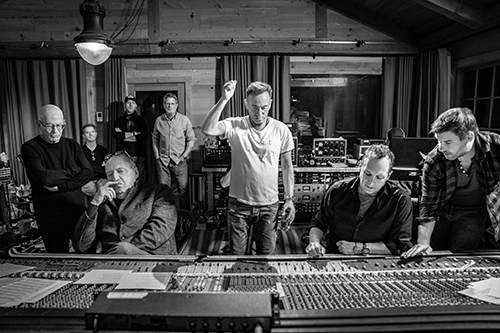
(Photo Credit: Rob Demartin)
EDITH: I love the bit in the film when you get in and go, ‘These lyrics are from like ’72, there some wild lyrics’ sort of thing. I wonder what it was like for you, I guess, almost like reading a journal in a way of your state of mind back then in terms of the content of it. Was it fun to go oh, this is where I was, this is what I was--and compare that with where you are now?
BRUCE: Yeah, it was a lot of fun. It was a tremendous amount of fun to find they still worked. When I arranged them with the band and this current form to realize these are still good songs. 50 years later they were still really good, so that was fun.
EDITH: It is infectious to watch you guys work and see how much joy you get out of it. Let’s bring in Mr. Thom Zimny right now to talk about this beautiful film that accompanies this record. When did you know there was going to be a film to kind of be a companion for this album, Thom?
THOM: I never knew--we never went out with a deliberate plan to make a film. It was the sort of thing where Bruce came to me and said would you like to join a week of recording with the band? I think every one of the film projects we’ve worked on together, it’s been that approach where there’s not a grand discussion of how it’s going to be or what’s the approach.
But it was one of those things where I watched it unfold. And I also got to see something for me as a filmmaker which was a dream come true, which was the DNA of E Street in the studio. Those small details.
And the camera was capturing these moments of collaboration that as a fan you can only dream about, so it was magical for me right from the start.
EDITH: What is it like watching, standing back and watching the E Street and Bruce make this record? Do you have to remind yourself you’ve got a job to do as opposed to just being a fan and getting into it?
THOM: It is the kind of thing where much later during this process I let myself enjoy it a little but more. I think I’m deep in the moment and taking in these details of relationships because each one of the E Street Band members just gives me as a filmmaker an interesting moment.
You know, on this album there’s the power of Max playing, and the beauty of Roy and the relationship with Steve. There’s all these things unfolding that later on you can sit back and go yeah, that is the power of E Street when Roy walks over and hits the Glockenspiel and you hear a sound.
So I’m looking for those details and I’m carrying a little bit of myself and my youth when I wanted to know about this band, but I’m also just being open to the moment. And the biggest thing is the collaboration of getting the time and trust with Bruce. That’s a huge part of everything that I’m doing in the film.
EDITH: You have this lovely opportunity where you kind of marry conversations that are going on int he studio now with old vintage. You mentioned Steve, there’s a great piece in particular where you’re talking about creating a song and then it cuts back to a really old piece of footage of a recording session from way back...of him having a conversation that could be now as well. That’s a lovely kind of insight into that journey and where those creative partnerships still hold so strong.
In terms of deciding that that’s how it was going to work constructively as a film, was that something that as you were going along you were piecing together how the film would end up?
THOM: Well, I would have to say that while taking in the actual process in the current day studio environment, there would be moments I’d look over and I would just flash back to footage from 1978. I would see Jon Landau standing net to Bruce. I would see a gesture, an expression and it would just bring me right back to that footage.
So I knew I needed to without explanation have a moment in the film where this magic occurs in the archival footage and show it in present day. And I found it with the moment of Bruce and Steve talking and just having this beautiful shorthand.
It’s those kind of details I’m most grateful to be around because they’re small moments. They really, they show a little bit of what I consider to be the magic that is hard to put into words.
EDITH: And similarly, Bruce, in the way you and Thom worked on Western Stars with these kind of beautiful meditations between piece of performance and recording, we hear you reflect on what you’re creating and where these stories and lyrics came from. How does that work with you and Thom? Does kind of get a rough cut of the film and then you’ll sit and write some things then record it? And also the score that goes under that as well?
BRUCE: Basically, those things come up through me thinking about what I’ve written and then I will expand on the text and subtext of the song in a written piece. I’ll then come into the studio and speak that onto tape. I will then orchestrate underneath those spoken words, or sometimes I may have the music first and then speak over the music. And then I send that off to Thom and he puts it to image.
We’ve had great success with those parts of the films that we’ve made and that they’ve really expanded the nature of what we were creating. We’ve been very lucky with those.
EDITH: Do you think there’s a--I like to think of albums as books in a way and every song is a chapter. You wouldn’t pick up a book and read Chapter 2 and then Chapter 8. You have to sort of listen to it in its entirety. And I very much feel that Letter To You is that. For you, what do you think the album is about? What do you want it to say?
BRUCE: Well, the album was the first time I’ve taken as my subject music itself...being in a band, rock-n-roll. That was the subject of this record, basically. Time passing, remembrance of friends that have gone, the celebration of the friends that are here, joy at simply being here, the hopefulness that comes with purely living. That was the subtext and subject of my record. It’s, like I say, I consider myself a fundamentally spiritual songwriter at this point, and so I’m sort of in there addressing your feet, I’m addressing your heart. I am significantly addressing your soul, also. So that’s my ambition in what I tried to accomplish.
EDITH: It’s like a healthy vitamin for the soul. It’s so good.
BRUCE: Yeah, thank you, thank you very much.
EDITH: We’ve got some great questions from this wonderful collection of people who’ve joined us, so I’m going to do some of those if that’s okay?
BRUCE: Let’s do it.
EDITH: Really quickly actually before, I’ve selfishly got a question on one of the songs on the record, which I’ve mentioned to you before is my favorite. I think it’s just, it feels almost like the heartbeat of the record, House Of A Thousand Guitars. What a song.
BRUCE: Yeah.
EDITH: Where did that come from?
BRUCE: I don’t know. I think because I chose as my subject music, that title came from somewhere. And when I get a title that’s as good as that, it starts to lead you. So I say okay, what is the house for me? Well, it’s the world that I created with my fans. It’s the values, the codes, the thoughts about how to live. It’s joy of just pure music and what it does for us. It’s this entire creation, this entire world and set of values that I build with my audience over the years.
And that song tries to summarize what that’s felt like for me and give a name to it, so it’s really my favorite song on the record. It’s a little bit of a sleeper, but if you listen to it, the soul really comes through.
EDITH: Thank you. And I’d like to start off with Robert from Poland. He says, ‘Are there any more unreleased songs that you’d like to record once again and release?’
BRUCE: Yes, there are many, many, many, many, many. And at some point I’m going to dig into that barrel and see what I can do with them, so at some point in the future they will be released, I’m glad to say.
EDITH: And he follows up with you ‘You say a lot about healing and the healing value of music, but what kind of music has a healing effect on you?’
BRUCE: Really, all music that I fall in love with, you know. I do a radio show and I play a lot of my favorite music. Music has always worked that kind of magic for me, so all music I listen to, whether it’s Louie Louie or whether it’s Marianne Faithfull or the Sex Pistols. I find some aspect of it is repairing, you know, appeals to you, fulfills, fills out your identity. It repairs your soul. I just find that this is the nature of music itself, so.
EDITH: Great. Let’s go to Austria and Bridget from [inaudible], you call The Castiles the school of rock. What was the most important thing you learned from being with them that you took into the rest of your career?
BRUCE: Many things. You know, I learned probably how to ultimately front the band. I learned how to put together a show. I learned how to perform. I learned that I didn’t want to be in band. I learned that I wanted to have a band, but I didn’t want to be in a band. And so these were all very important lessons for the future.
EDITH: Then Nick Joyce from Switzerland says you once described life as a road trip where different versions of yourself take turns at the wheel. Do you still find new version son yourself?
BRUCE: Always, every day brings something new. You know, and you’re constantly creating self every day you’re alive, and so I never know who I’m going to be next year. But you also don’t leave your other selves behind. They stay with you for the rest of your life also, so the car gets pretty crowded, but it all depends on who’s driving as to how well you’re doing.
EDITH: Oh, going on a road trip with Bruce Springsteen would be amazing. John from The Netherlands, from NPO Radio would like to know which song is most previous to you? And I don’t know if John means from this record, maybe you can give us from this record, but also I guess from the entire--
BRUCE: Well, soulfully, I like Racing In The Street. That’s a really good song. Darkness on the Edge of Town is a meaningful song for me. Of course, Born To Run, you know, that still has great meaning for me. Thunder Road has great meaning for me.
The Born To Run album in general, the Nebraska album in another way has great meaning for me. The song The Rising, one of my best songs. There’s a lot of them over time, and there’s some songs on this record that I feel that way about, House Of A Thousand Guitars. So I’ve got my favorites.
EDITH: Let’s go to Germany and Werner[?] from DPA, says, ‘To my ears, Western Stars and Letter To You are quite different in sounds and influences, but not in mood or topics. Many songs reflect on age, life, death, broken dreams, especially the American dream shattered. How do you compare these two albums?’
BRUCE: They feel quite different to me. I think Western Stars was--the protagonist of Western Stars was a loner and it’s a sort of classic American solitaire character, trying to find his way through is life, you know, trying to find connection.
The protagonist in Letter To You is amongst a community of musicians, particularly, but a community at large. So he’s not a loner, he’s a part of something. You know, he’s a part of a greater world, which is me in Letter To You, addressing all of my fans. I’m a part of that world. I’m a part of the world of my band, which has given me a home for the past 50 years, and neighbors, and friends and a deep love that exists in our group.
So the protagonist of Letter To You is almost the opposite of the protagonist in Western Stars. You know, he’s found a place in the community. He’s found a neighborhood. He’s found a purpose. He’s found a group of people. He’s a social creature. Whereas the protagonist in Western Stars is quite isolated, but trying to find his way towards getting in, so they’re quite different.
EDITH: Mateus[?] from RND Germany says, ‘The song Burning Train is a wall of sound in C-Major. The sound is confident. The passenger is marked by [inaudible]. Where is this burning train going and does it run from the same track as the train you described in Land of Hope and Dreams?’
BRUCE: I would say they’re on different tracks because Burning Train is basically a song about sex and death. Whereas Land of Hope and Dreams is sort of the spiritual anthem about the afterlife almost, you know, so they’re quite, quite different in their own ways.
EDITH: And Giuseppe from, I apologize for my pronunciation as well, Scottish people doing particularly European names is terrible -- Republica in Italy, I’m going to say that. Says, ‘Why was a beautiful song like if I Was A Priest beautifully written, novelistic and cinematic in detail, never released before?
BRUCE: Because I’ve got a lot of songs like that. There’s a lot of hopefully beautiful stuff still in the can that is yet to be released. And the only thing I can contribute it to is mood, you know, or a concept I have for a record where things either fit or don’t fit. And I wouldn’t--if you had asked me six months or a year ago, I wouldn’t have dreamed that I would be putting If I Was A Priest on my current album, but that’s the way it worked out. There’s a little bit of whimsy involved in all of those things.
EDITH: And do you think recording this record in five days had an impact on that as well in terms of these are the songs, these are the ones we’re doing kind of thing as well?
BRUCE: Yeah, I didn’t have a lot of outtakes. I had the 10 songs that I had. I didn’t think of trying to write 13 or 14. And so I worked exclusively with the material that I had and it made for a very economical process.
EDITH: And Enrica from Esquire Magazine says how or why do you think your music has this brilliant ability to appeal to new generations of music fans time and time again?
BRUCE: I hope that it does. I think my themes are universal and they’re not necessarily--they’re not restricted. They’re multigenerational. The problems that I dealt with -- community, home, family, love, life, issues of the spirt and the soul -- these are things that simply are common to all humans at all ages. And so if you are interested in those things, my work is a logical place for you to end up, regardless of how old you are.
And I mean there are young kids, even in their teens, who are interested in those aspects of life and are drawn to my music, so it’s a blessing.
EDITH: And then we go to Switzerland to Jan from the [inaudible 00:37:37:00], a lighter one. He’s got a lovely thing he wants to say then a question. ‘It’s so nice to see the members of one of the greatest bands in history using notepads like students in front of their teacher. Using these organic and old fashioned tools is a good way to remain humble and grounded. I love that observation.
BRUCE: Well, you have to remember that we’re all old, so we use things like pencils, paper, notebooks, and so consequently that’s the way the guys do it, you know. They scribble it down and then they follow it, so it’s kind of funny.
EDITH: And then he asks, by picking some of your historical, never cut before songs, is it an album that connects you to your younger self, a letter to you that’s also a letter to yourself?
BRUCE: Yeah, it did connect me to my younger self, which was a lot of the fun of writing it because I’m sort of reliving my own--in some of the songs I’m reliving some of my own experiences as a teenage bar band player. I’m reliving the experience of what music has given to me, and so it was quite enjoyable, that aspect of the record.
I had a lot of fun with it and it was lovely to re-immerse myself in the world of The Castiles in the mid ‘60s. That’s a golden and very special time for me, so it was nice to sort of go back and revisit.
EDITH: What was nice as well about those discussions around that time in the film as well was this lovely reflection on what it was like to be a band star of that time. You talk about all these venues, I mean basically anywhere you could plug an amp in, you would play, amazingly.
BRUCE: I mean I have played on the beach, on the sand on one hot Saturday August afternoon for a bunch of teenagers in bathing suits. I have played firemen’s fairs, CYOs, high school dances, pizza parlors, bar mitzvahs, bowling alleys, Knights of Columbus, the Elks Club, you name it...I’ve played it over the years. There’s very few things that I haven’t done as far as a working musician.
EDITH: It’s a very different experience for bands starting out now, it’s very, very different.
BRUCE: It’s a shame they miss all that because it’s a hell of a school.
EDITH: This is a lovely point from Werner again from Germany who says you look a lot younger than your age now. You look so well and healthy. Your energy in the studio is absolutely sterling. Do you look forward to the three-hour-plus concerts next year again with the E Street Band?
BRUCE: Hell yes, I do. You know, we are at the peak of our game. I feel more vital than I’ve ever felt in my life. The band is absolutely out at their best, and it’s frustrating to us not to be able to do that right now. By the time we get out there, it’ll be a new explosion on stage.
EDITH: It’s going to be like four hours, isn’t it? It’s great for us.
BRUCE: At least, yeah, of course.
EDITH: Yeah! And before we finish up, we see you in this beautiful location that we see in the film, your studio.
BRUCE: Yes, my studio.
EDITH: It’s absolutely gorgeous. Yeah, it’s great. Is that where you go most days? Do you go in and play on things and write?
BRUCE: I am here a lot of days. Either I am or my lovely wife, Patti Scalfia is, who’s working on a lovely record of her own right now. I spend quite a bit of time here and it’s a lovely place to spend the day.
EDITH: Is that where you record your radio shows?
BRUCE: I do. I do. I have a little booth. I go back there and I play DJ.
EDITH: And have you got plans to do more of that because those have been, I have to say, such brilliant kind of escapism during this horrendous time of COVID...to have you soundtrack a few hours of escape.
BRUCE: Yeah, I’m going to keep doing that for as long as I have some ideas, and I’ve enjoyed it a lot. I get to involve myself in music that’s not mine and it’s--I’ve found it to be a lot of fun and satisfying.
EDITH: Well, it’s a lot of fun for us to listen to. Thom, thank you so much for being here as well today to take us through this gorgeous film
THOM: Thank you.
EDITH: that accompanies this wonder record as well, Bruce. Thank you for your time, ladies and gentleman.
BRUCE: Thank you, everybody! Thanks, guys! Thank you, ladies.
EDITH: Take care, everybody, and stay safe. Thank you so much. Thank you for your questions. Thank you, bye Bruce.
TALITA: Thank you everybody for your time today and joining us. Have a wonderful rest of your day. Bye.
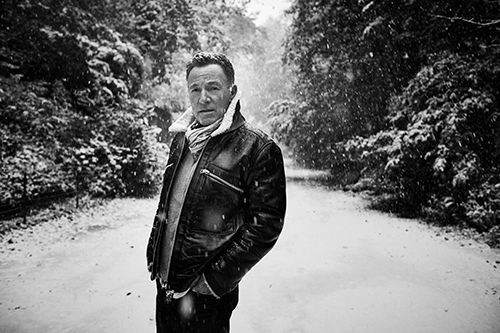
(Photo Credit: Danny Clinch)
Bruce Springsteen bei Hooked On Music
News-Redakteur: Epi Schmidt
